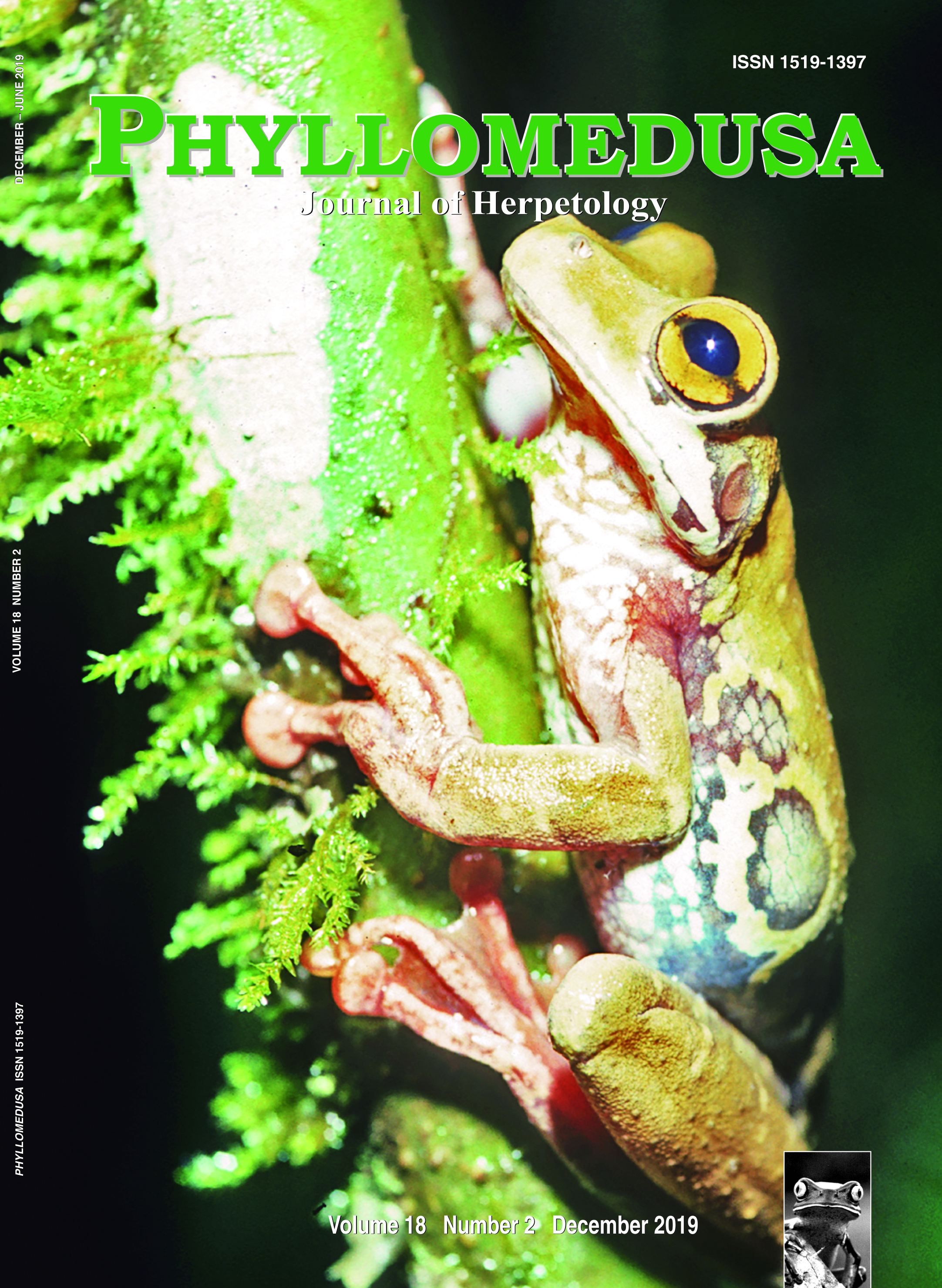Rediscovering Cycloramphus bandeirensis (Anura: Cycloramphidae): natural history and breeding biology of a vulnerable species with a variant reproductive mode
Rediscovering Cycloramphus bandeirensis (Anura: Cycloramphidae): natural history and breeding biology of a vulnerable species with a variant reproductive mode
DOI:
https://doi.org/10.11606/issn.2316-9079.v18i2p159-175Keywords:
Atlantic Forest Domain, endemic species, heterochrony, semiterrestrial tadpole, southeastern BrazilAbstract
Rediscovering Cycloramphus bandeirensis (Anura: Cycloramphidae): natural history and breeding biology of a vulnerable species with a variant reproductive mode. We present here data on the breeding biology of Cycloramphus bandeirensis, including descriptions of the advertisement call and tadpole. Males call from beneath rocks in open grasslands above approximately 2,450 m a.s.l. at the Parque Nacional do Caparaó, southeastern Brazil. Breeding occurs from late October–December, when mist and clouds frequently cover the area. The advertisement call consists of a frst note, followed by two or three shorter ones. The spawn is hidden under rocks from which the males call, and the tadpoles are exotrophic and semiterrestrial. This report of a semiterrestrial tadpole that develops in seclusion in a terrestrial habitat is a variant of Reproductive Mode 19. We compared the ontogeny of the semiterrestrial tadpole of C. bandeirensis to that of generalized tadpoles, and a new function is ascribed to the skin fap that is present in larvae of Cycloramphus. It is suggested that C. bandeirensis be transferred to Vulnerable category (VU, d2) of IUCN; the species has a small geographic range (< 20 km2 ), specialized environmental requirements, is vulnerable, has phylogenetic affnities to species that consistently have undergone local population crashes in southeastern Brazil, and is subject to plausible potential threats in its range (e.g., fres and climate change).



 Impact Factor (JCR): 0.600
Impact Factor (JCR): 0.600 CiteScore: 1.0
CiteScore: 1.0